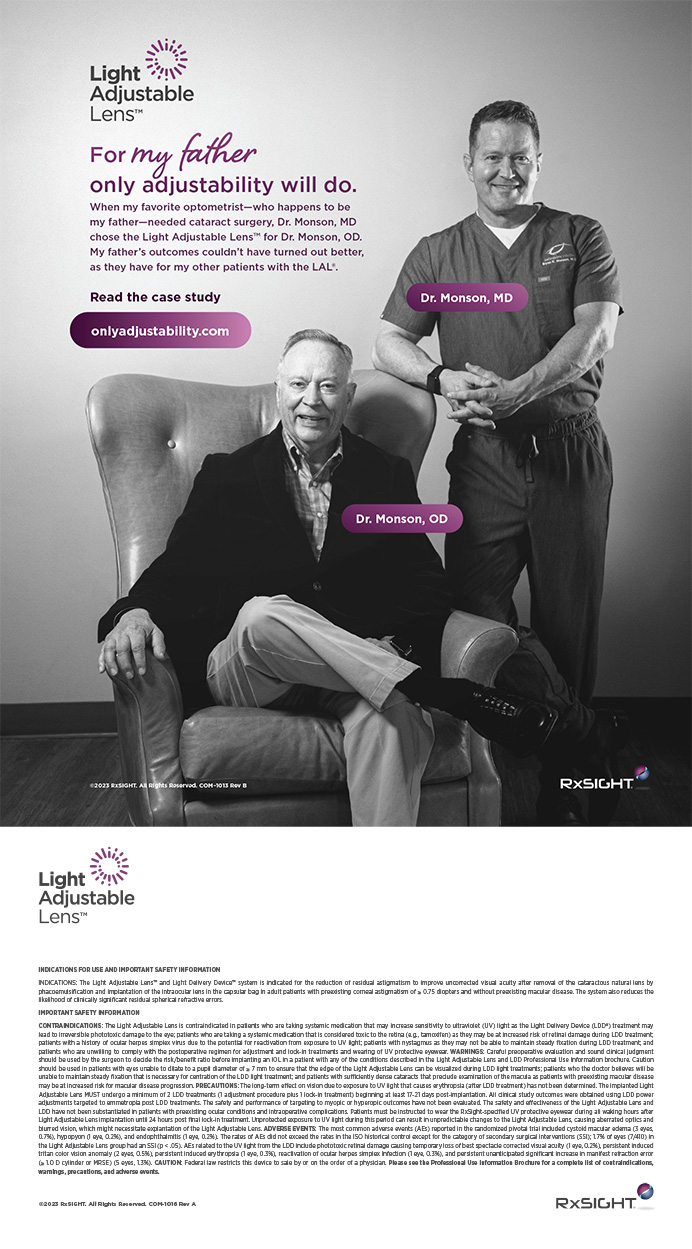
Believe it or not, presbyopia correction continues to be one of the biggest unmet needs in ophthalmology and, by a gigantic margin, the greatest unmet need in refractive surgery. If you had asked me when I first came out of training 20 years ago if there would be a near-perfect surgical or pharmacologic treatment for presbyopia by 2018, my answer would have been a resounding yes.
And yet I think we all find ourselves frustrated and handcuffed by the mediocre solutions we have today. Many technologies have fallen by the wayside on the journey to restorative near vision: hexagonal keratotomy, laser thermal keratoplasty, conductive keratoplasty, and, most recently, the Raindrop corneal inlay (ReVision Optics) have all been deemed inadequate solutions to presbyopia correction or have failed financially. Even with the latest iterations of multifocal, accommodating, and extended depth of focus IOLs, most of us still struggle to choose the least problematic implant for each patient’s individual needs.
In the past few years, however, there has been an upwelling of activity in the potentially megadisruptive and almost taboo arena of pharmacologic treatments for presbyopia and cataract. In late 2016, the $465 million purchase of Encore Vision and its EV06 ophthalmic solution (lipoic acid choline ester 1.5%) by Novartis (Alcon) rattled our cages and indicated the potential reality for the preventive treatment of presbyopia and cataracts. Further, two drug candidates now in phase 2 clinical trials, AGN-199201 and AGN-190584, could potentially help Allergan bring a new topical molecular entity to market for the treatment of presbyopia. There are also several startup companies—PresbyPlus, Liquid Vision, and FOV Tears, to name a few—that are exploring various combinations and concentrations of compounds to find that magic potion to improve accommodation.
The implications and reality of a commercial topical treatment for presbyopia and cataract are a bit staggering. Our natural first reaction to this idea is likely one of anxiety and fear. Would it put us out of business? Take away the surgical care we love to provide? A pharmacologic agent with cataract- and presbyopia-correcting properties creates a classic conflict of interest, as we struggle to find the path of what is best for our patients and what is best for us personally. This is the first time in my career that we are faced with a scenario so potentially disruptive to the way I am used to treating my patients.
From the industry side, there are likely similar concerns, as so many small and large ophthalmic companies’ revenue streams are tied to the surgical care of the dysfunctional and aging lens. If a viable drop came to market that delayed presbyopia and slowed the progression of cataracts, it would likely send much of the ophthalmic industry and its innovation cycle into an ice age.
Perhaps this may sound like a doomsday scenario or a conspiracy theory, but the reality is that the trend toward less-invasive patient care is pervasive throughout medicine, and it is the future. Clearly, as advocates for our patients’ best interests, we must endorse and support the development of less-invasive treatments, even if it ultimately leads to a change in the way we practice and affects our ability to do what we were trained to do. However, the more likely positioning of this new modality of treating presbyopia will be less of a panacea and more of a bridge to get patients engaged at an earlier age, open the door to more permanent surgical solutions, and provide a stop-gap measure until surgical treatment is warranted. Obviously, pharmacologic treatments in this space are not on the near horizon—and some may think the idea is farfetched—but it is an interesting exercise to acknowledge that the only constant is change. To continue to be relevant, we must always keep an eye on the future and prepare for it.
Robert J. Weinstock, MD | Chief Medical Editor




